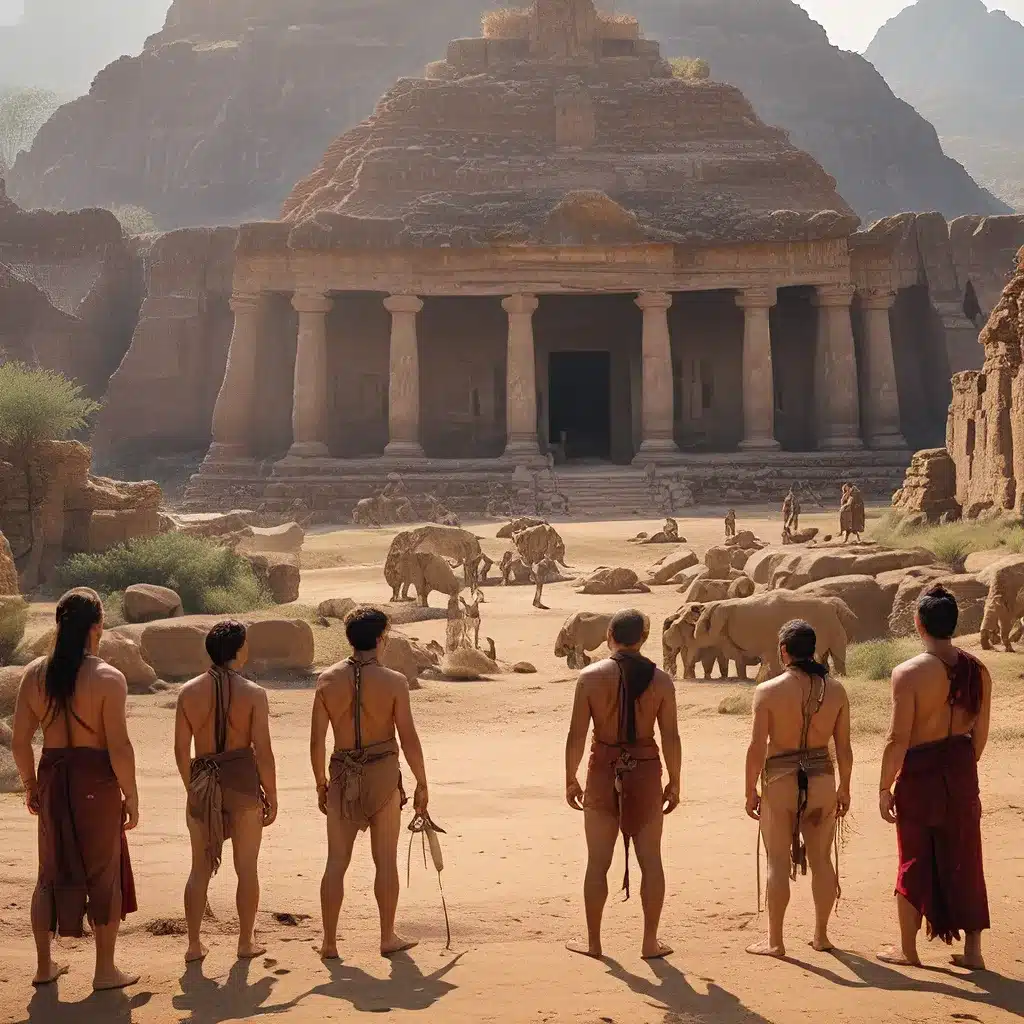
In the ever-evolving landscape of archaeological discoveries and historical analysis, our understanding of ancient civilizations continues to be challenged and refined. From the towering dinosaur fossils that captivate our imaginations to the intricate details of long-lost cultures, the secrets of the past hold the power to shape our present and inform our future. Join us as we embark on a journey through time, exploring the primal perspectives that have defined the worldviews of our ancestors and the profound impact they continue to have on our modern era.
Unveiling the Mysteries of Dinosaur Habitats
The study of dinosaurs has long been a fascination for scientists, historians, and the general public alike. Recent archaeological excavations have unearthed remarkable new insights into the environments in which these massive creatures once roamed. Through the careful analysis of fossilized remains and the surrounding geological evidence, researchers have been able to reconstruct the intricate ecosystems that sustained diverse populations of dinosaurs.
One such remarkable discovery was the uncovering of a dinosaur nesting site in the Gobi Desert of Mongolia. This remarkable find not only provided a rare glimpse into the social behaviors and familial structures of these prehistoric creatures but also shed light on the sophisticated adaptations they had developed to thrive in harsh, arid environments. By examining the nesting patterns, egg sizes, and the presence of hatchlings, scientists have been able to piece together a more complete understanding of the life cycle and migratory habits of these ancient giants.
Exploring the Worldviews of Lost Civilizations
Alongside the study of dinosaurs, the exploration of ancient civilizations has yielded profound insights into the diverse perspectives that have shaped human history. From the towering Aztec pyramids of Mesoamerica to the enigmatic Moai statues of Easter Island, each archaeological site tells a story of the unique cultural, spiritual, and societal beliefs that defined these societies.
One particularly fascinating example is the Göbekli Tepe site in modern-day Turkey, which has been dated to over 11,000 years old. This ancient temple complex, with its intricate carvings and elaborate stone structures, has challenged the traditional narrative of the hunter-gatherer lifestyle, suggesting a level of organizational complexity and spiritual sophistication that was previously thought to have emerged much later in human history.
Deciphering the Symbolism of Ancient Artifacts
The study of ancient artifacts has long been a crucial component of archaeological research, as these physical remnants provide invaluable insights into the cultural and religious practices of our ancestors. From the hieroglyphic inscriptions of ancient Egypt to the petroglyphs found across the globe, each artifact holds the key to unlocking the worldviews and belief systems that defined these civilizations.
One intriguing example is the Nazca Lines in Peru, a series of massive geoglyphs that have captured the imagination of scholars and the public alike. While the exact purpose and meaning of these enigmatic drawings remain a subject of debate, the sheer scale and complexity of the Nazca Lines suggest a highly advanced understanding of astronomy, mathematics, and engineering among the ancient Peruvian cultures.
Emerging Theories and Controversies in Ancient History
As our understanding of the past continues to evolve, new theories and discoveries have challenged long-held beliefs and sparked lively debates within the academic community. One such controversial topic is the potential connection between ancient civilizations and extraterrestrial influences, a hypothesis that has gained traction in recent years due to the apparent technological and architectural sophistication of certain archaeological sites.
While these theories remain highly speculative and subject to rigorous scientific scrutiny, they nonetheless serve as a reminder that our knowledge of the past is constantly in flux. As new evidence emerges and interdisciplinary approaches are employed, the narrative of human history continues to be rewritten, inviting us to approach the study of ancient cultures with an open and inquisitive mind.
Embracing the Diversity of Worldviews
As we delve deeper into the primal perspectives of ancient societies, it becomes increasingly clear that the diversity of human experiences and belief systems is a fundamental aspect of our shared history. By cultivating a greater understanding and appreciation for the cultural, religious, and philosophical frameworks that have defined the worldviews of our ancestors, we can gain valuable insights into the shared humanity that transcends the boundaries of time and space.
In this era of rapid globalization and increasing cultural exchange, the study of ancient civilizations has never been more relevant. By exploring the perspectives of our forebears, we can challenge our own preconceptions and biases, and embrace the rich tapestry of human experience that has shaped the world we inhabit today.
Through the lens of archaeology and historical analysis, we are afforded the opportunity to reconnect with the primal roots of our collective past, and to reexamine the fundamental questions that have captivated the minds of humanity for millennia. Join us as we delve into the mysteries of the past, and uncover the transformative insights that can guide us towards a more interconnected and enlightened future.


